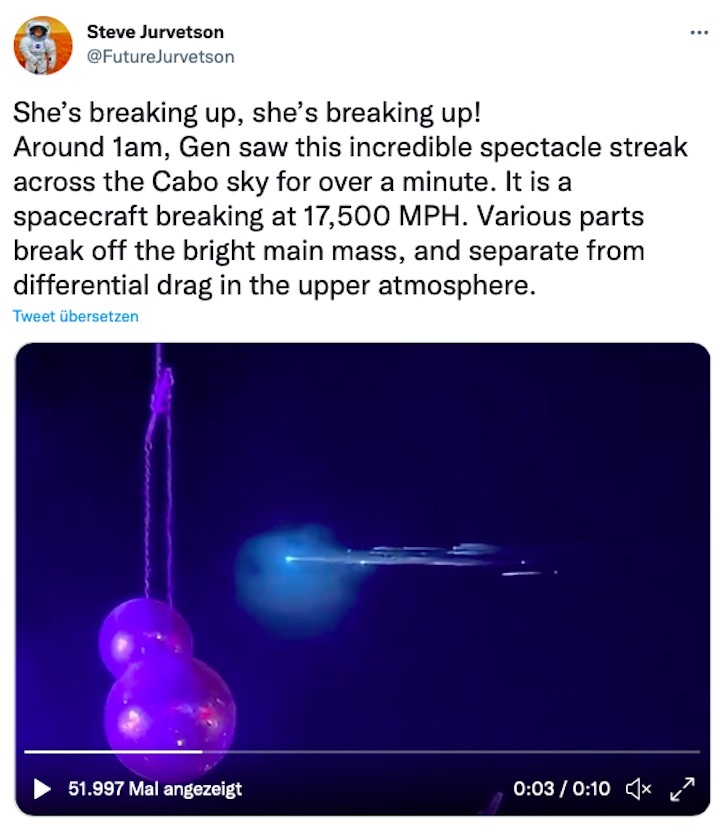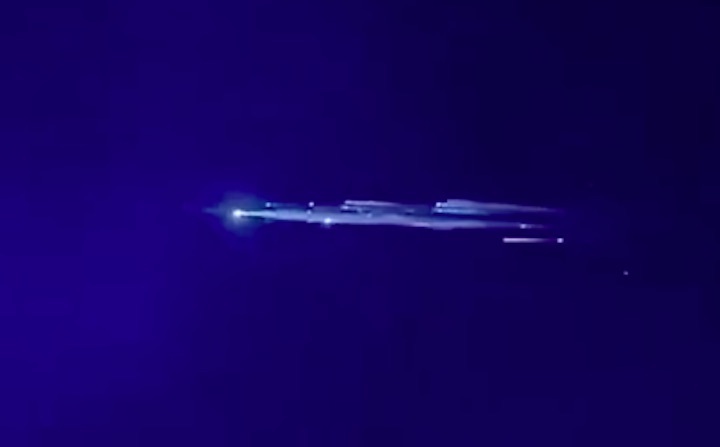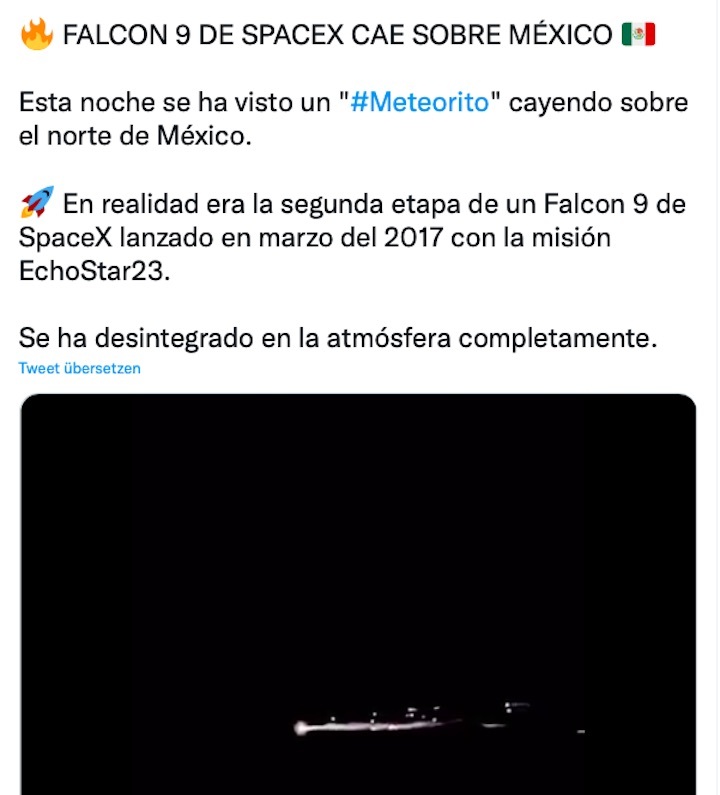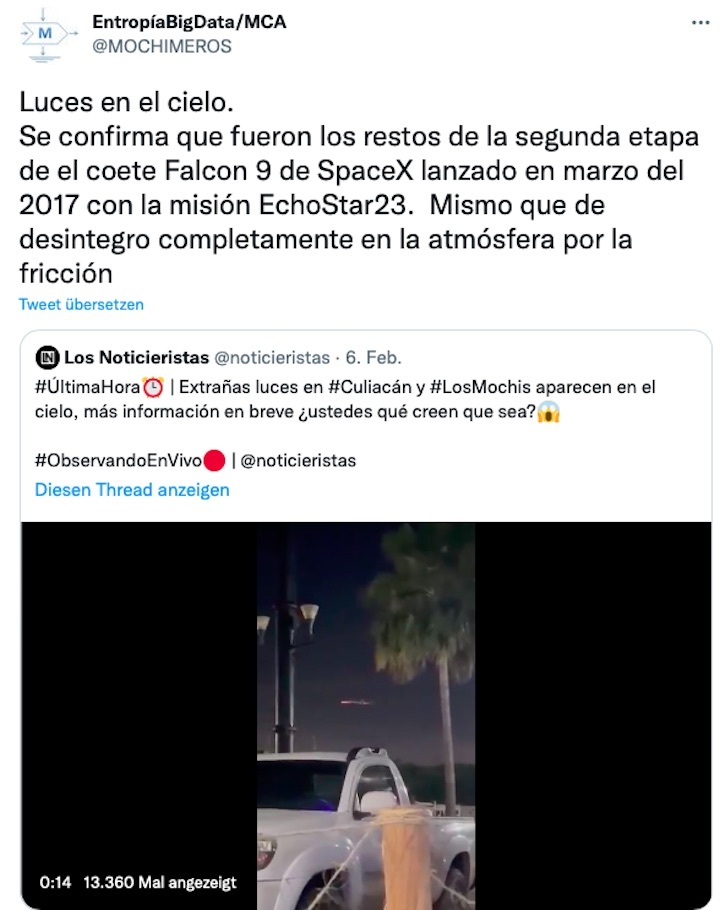8.02.2022
The rocket stage helped heft the Echostar 23 satellite to orbit in 2017.
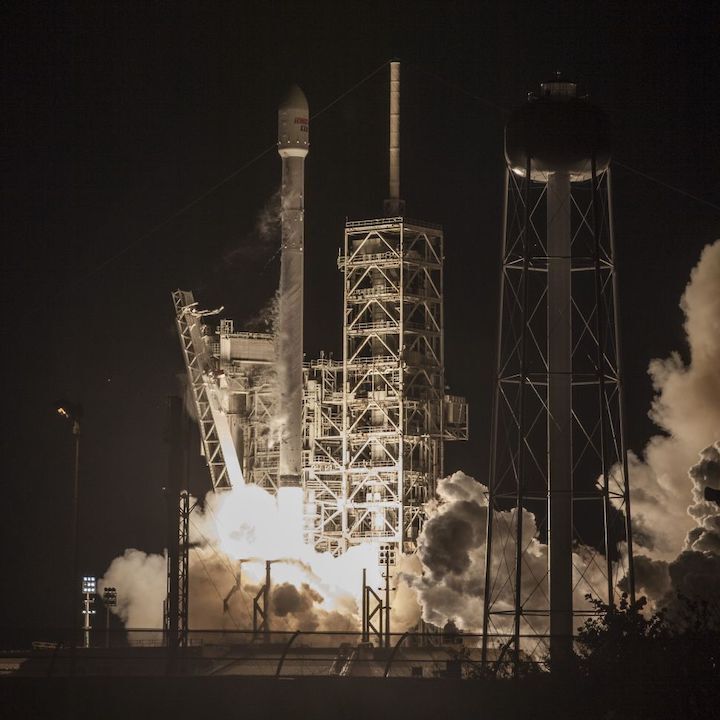
A SpaceX rocket's upper stage appears to have broken up safely over Mexico, five years after sending a satellite into space.
Local reports on Twitter indicated that a part of the Falcon 9 that sent the Echostar 23 mission aloft in March 2017 met its demise Saturday (Feb. 6) after falling into the Earth's atmosphere.
"Tonight a 'meteorite' has been seen falling over northern Mexico," Spanish-language feed Frontera Espacial tweeted along with a video showing the disintegrating second stage.
A meteorite is a space rock that has made it all the way through the atmosphere and landed on the ground, although in this case the rocket stage completely disintegrated high above Earth, according to Frontera, so it wasn't really a meteorite. And as you can see below, this Twitter feed was just one of several that spotted the disintegrating rocket.
Neither SpaceX nor its founder, Elon Musk, commented on the Falcon 9's disintegration on Twitter. It's very normal for rocket stages to burn up in the Earth's atmosphere, however, so it may be that neither saw the need to discuss the matter.
The reentry of the Falcon 9's upper stage was confirmed on the Aerospace Corporation's website, which tracks upcoming reentries of satellites and space vehicles.
Echostar 23, which that Falcon 9 stage helped put into space, was launched to geostationary transfer orbit some 22,300 miles (35,900 kilometers) above Earth and was initially targeted for an orbital position above the equator at 45 degrees west longitude.
Its initial mission was to provide broadcast, internet and other communications services to Brazil. The satellite is operational and expected to last for at least another decade, according to NASA.
